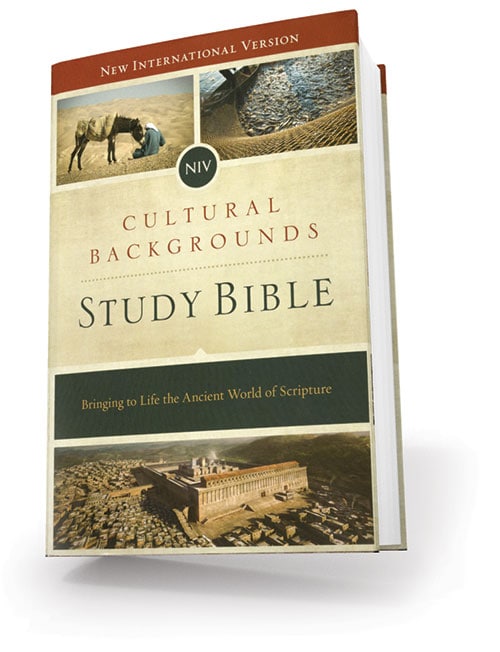
Study Bibles have proliferated significantly over the past two decades. If you are a teenager or a woman or a man, you can buy a study Bible tailored to your (perceived) needs. Some study Bibles engage archaeology or the Protestant Reformation, while others focus on discipleship, life applications, or apologetics. People preferring a charismatic focus in their reading of Scripture will find numerous options, as do Jewish readers, or those who enjoy a particular Christian author. Adventist readers can purchase a study Bible with Ellen G. White comments, or enjoy the notes written from an Adventist perspective in the Andrews Study Bible.
These diverse study Bibles all aim to make the Book of books more understandable and real. The New International Version Cultural Backgrounds Study Bible (NIVCBSB) continues this tradition, seeking to “increase [the] understanding of the cultural nuances behind the text of God’s Word” (p. iii). Like other study Bibles, the NIVCBSB includes an introductory section for each biblical book. Unlike other study Bibles, it focuses less on message or theology and more on historical and literary settings. Hidden throughout the volume are dozens of helpful charts and maps, as well as short notes and articles, often appearing together with color images from ancient Near Eastern artifacts, sprinkled throughout the textual notes. These notes and articles are indexed at the end of the NIVCBSB (pp. 2273-2284), which also includes a 2,474-word concordance based on the text of the NIV.
The two editors of the NIVCBSB, Wheaton College professor John H. Walton and Asbury Theological Seminary professor Craig S. Keener, provide a very helpful introduction, responding to a number of important questions (pp. viii-xi), such as “How was Israelite culture shaped by its surrounding culture?” or “How will understanding the Bible’s cultural background improve my faith walk?” The Old Testament chronology favored in the NIVCBSB suggests a fifteenth century B.C. exodus, a position that most Adventist scholars would agree with, and a rare position in contemporary scholarship. The introduction to the book of Daniel situates the book solidly within the Babylonian and Persian empires, even though the editors allow for possible later writing down of the oral tradition—possibly a nod to critical scholarship suggesting a second century B.C. date for the writing of Daniel.
The NIVCBSB includes an important three-page introduction, “Major Background Issues From the Ancient Near East” (pp. xxxix-xli), highlighting 12 key elements of cultural concepts of the ancient world that differ, often significantly, from people living in the twenty-first century. These include, among others, God’s presence in the material world, the focus on community (as opposed to individualism), the reality of the spirit world, the lack of clearly distinguishing between the natural and the supernatural world, the importance of creation, death, and memory, and the retribution principle. A careful consideration of this important note offers a good starting point for reading the Word that has been speaking throughout millennia and in different cultures—and continues to speak loudly and clearly. The NIVCBSB offers a useful amplifier for those who long to hear.